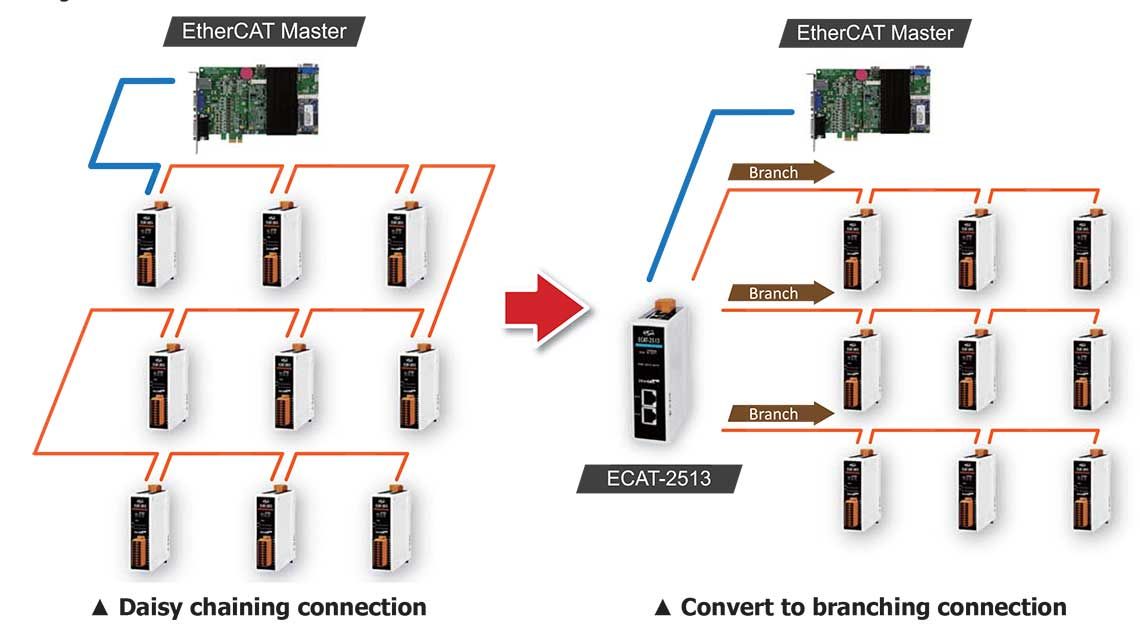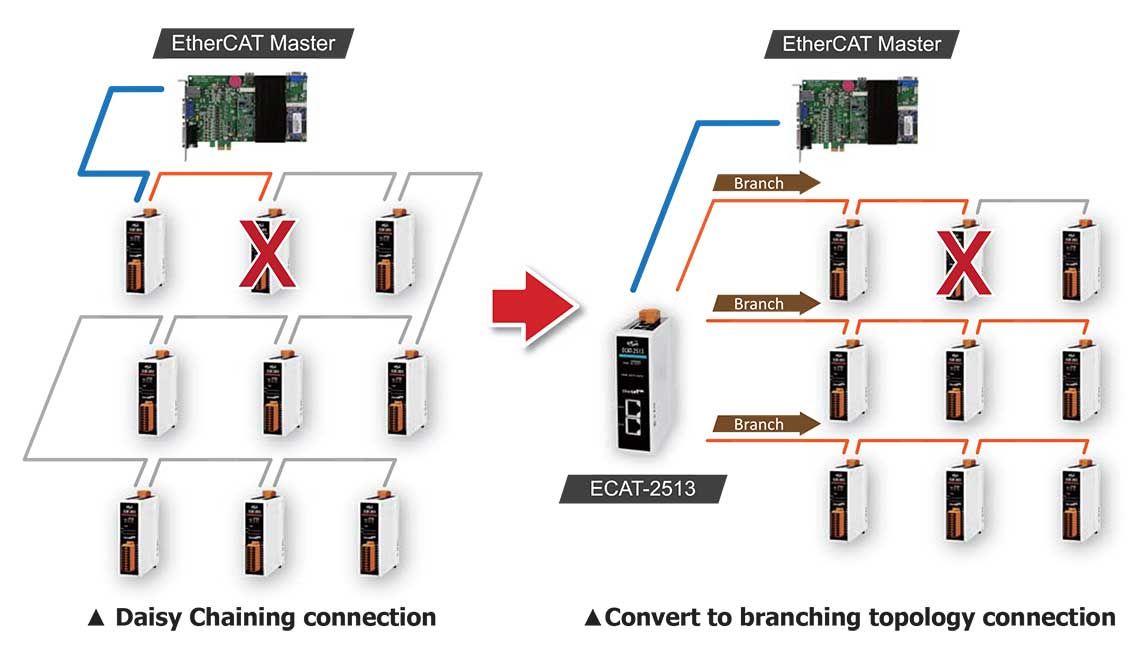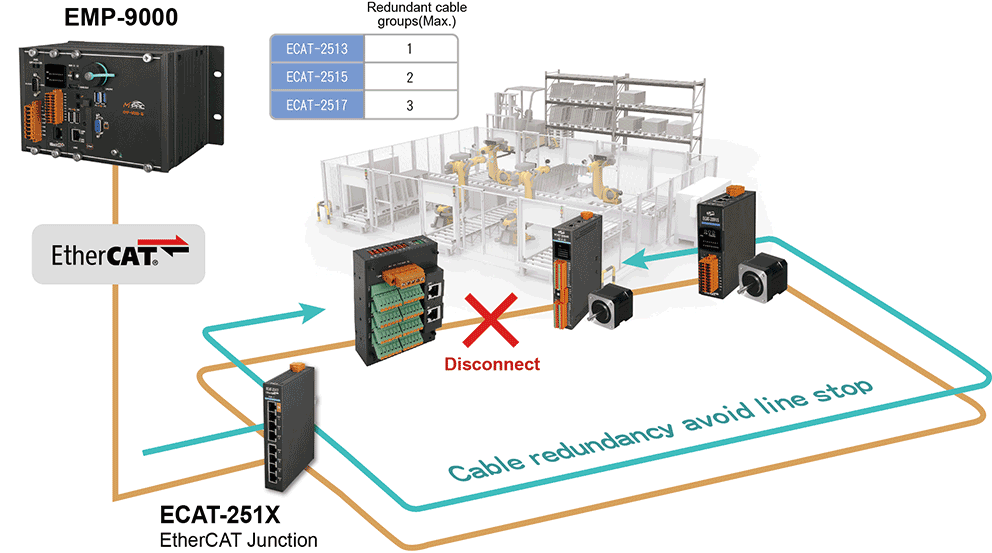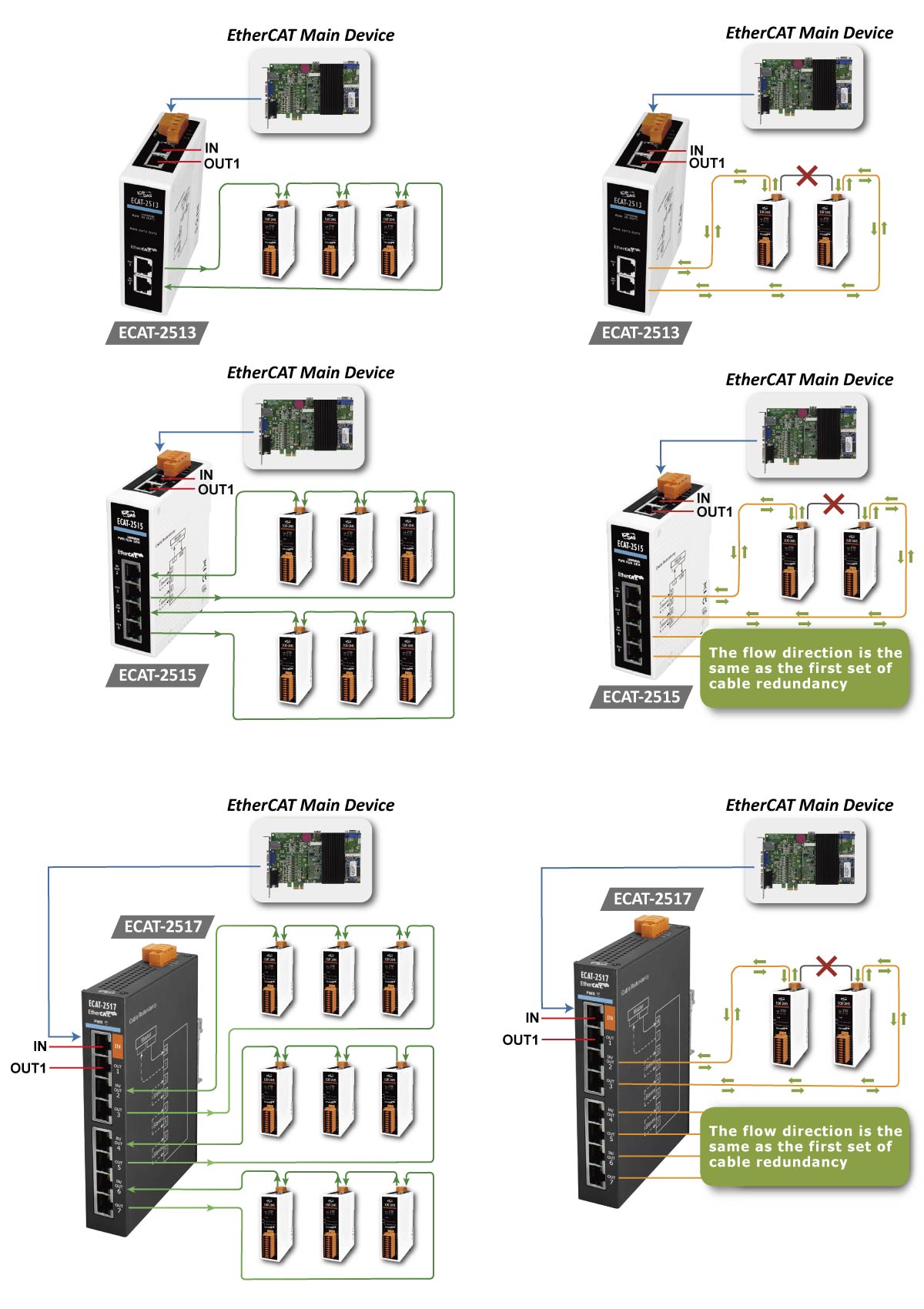EtherCAT Junction Modules
The EtherCAT modules can support most topology, including linear, tree, and star. If the star topology necessitates a branch at a specific point, an EtherCAT junction can be used to replace multiple slave devices. The IN port is the network's input port. The OUTx port can be used to connect additional EtherCAT slave modules.

Greatly reduce wiring installation work
Convert the Daisy-Chain multi-way tap topology (Branch) directly using the EtherCAT junction to simplify wiring.

Improve Debugging Efficiency And Reduce Losses
In the daisy chain topology, if one slave device fails, all subsequent devices will shut down. If there is an EtherCAT junction that can help divide the network into different areas, only specific area will be affected, leaving the other areas canbe operate normally. Furthermore, the debugging function can be separated to improve debugging and troubleshooting efficiency.

Cable Redundancy
Cable redundancy is a ring topology. When the communication cable on one side is disconnected, it can also communicate through the cable on the other side to ensure the stable operation of the control system. The structure is as follows.


|
|
|
|
|||
Converter SeriesThe ECAT-2511-A and ECAT-2511-B a pair of converters for converting signals between EtherCAT and single mode fiber. Optic fiber prolongs the distance of transmission. It not only provides secure data transmission but also prevents interference from EMS/RFI.
|
|||
| Model | Ethernet | Fiber | |
|---|---|---|---|
| Ports | Ports | Wavelength | |
| ECAT-2511-A
|
1 x RJ-45 | 1 x SC connector, Single-Mode | TX: 1310, RX: 1550 nm |
| ECAT-2511-B
|
TX: 1550, RX: 1310 nm | ||


